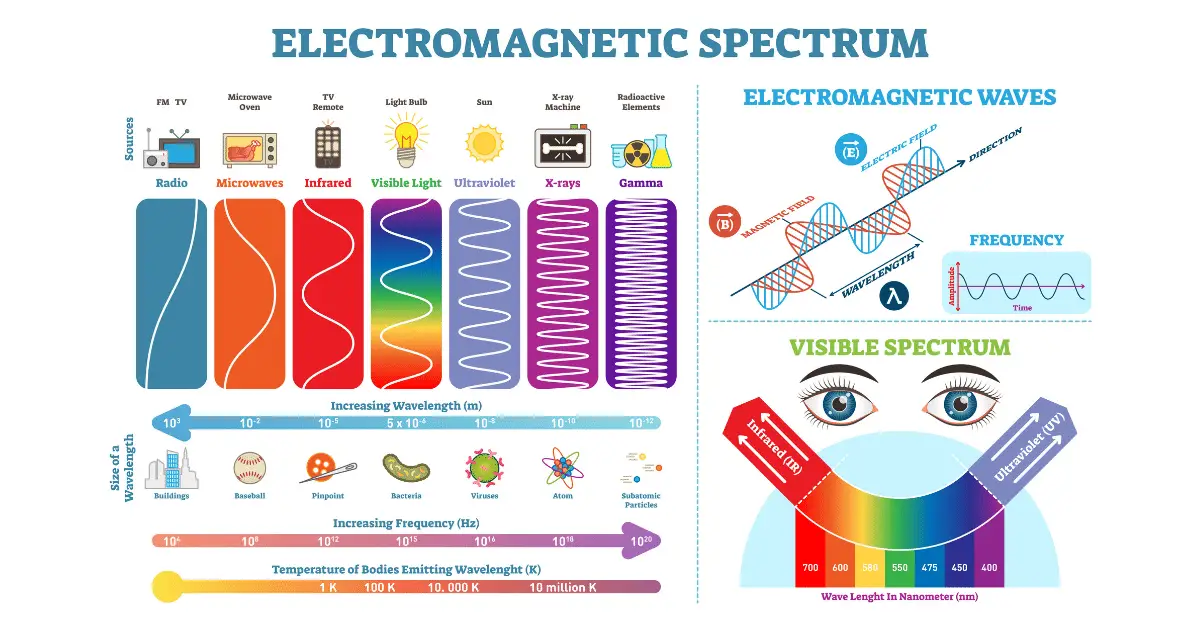Are you wondering if infrared technology is safe to use? With the advancement of technology, people are more concerned than ever about their health and the possible risks associated with emerging technologies. Infrared technology is one of them. In this article, we’ll look at the potential health risks associated with infrared technology, and explore if it is indeed safe to use.
Infrared radiation is generally considered safe for humans. It does not have enough energy to affect chemical bonds in molecules and therefore does not cause direct damage to tissues. Infrared radiation is used in many applications including heating, sensing, communication, and entertainment.
The energy from infrared radiation is absorbed by the skin and converted to heat, which can be uncomfortable in high doses. Prolonged exposure to high levels of infrared radiation can cause the skin to become reddened and dry, but is not considered harmful.
Infrared radiation also produces electromagnetic fields, which can interfere with medical devices such as pacemakers, hearing aids, and implantable defibrillators. Therefore, it is important to keep medical devices away from sources of infrared radiation.

Contents
What is Infrared Radiation?
Infrared radiation is a form of electromagnetic radiation with a wavelength that is longer than visible light. It is not visible to the human eye, but can be felt as heat. Infrared radiation is emitted by objects that are heated to a temperature above absolute zero, which is the temperature at which all thermal motion stops. This radiation is used in many everyday applications, such as heating, remote sensing, and communication.
Infrared radiation can be divided into two categories: near-infrared and far-infrared. Near-infrared radiation has a wavelength that is shorter than visible light and is used for applications such as night vision, thermal imaging, and medical imaging. Far-infrared radiation has a longer wavelength and is used for applications such as heating, drying, and communication.
Are Infrared Rays Dangerous?
The answer to this question is both yes and no. On one hand, infrared radiation is not directly harmful to humans, as it does not contain any ionizing radiation. This means that it does not have enough energy to ionize atoms or molecules, which can lead to the formation of cancer-causing free radicals.
On the other hand, overexposure to infrared radiation can cause damage to the eyes, skin, and other tissues. Prolonged exposure to infrared radiation can cause burns, cataracts, and even cancer in some cases. In addition, infrared radiation can cause heating of the body and increase the risk of heat stroke.
Effects of Infrared Rays on the Skin
Infrared radiation can penetrate the skin, causing it to heat up. Prolonged exposure to infrared radiation can cause significant damage to the skin, including sunburns, premature aging, and even skin cancer. In addition, infrared radiation can cause damage to the eyes, leading to cataracts, eye strain, and other vision problems.
How to Protect Yourself from Infrared Radiation
The best way to protect yourself from the harmful effects of infrared radiation is to limit your exposure. This can be achieved by wearing protective clothing, such as sunglasses, long-sleeved shirts, and hats. It is also important to avoid direct exposure to the sun, as this is the primary source of infrared radiation.
Uses of Infrared Radiation
Infrared radiation has a variety of uses in everyday life. It is used in medical imaging, such as X-rays and CT scans, and in communication, such as WiFi and cell phone signals. In addition, it is used in heating and cooling systems, as well as in industrial processes.
Uses in Medicine
Infrared radiation is used in medical imaging, such as X-rays and CT scans. These imaging techniques allow doctors to see inside the body without having to perform surgery. In addition, infrared radiation is used to detect tumors, measure blood flow, and diagnose diseases.
Uses in Industry
Infrared radiation is used in industrial processes, such as welding and cutting. It is also used to detect defects in materials, as well as to measure the temperature and humidity of a space. In addition, infrared radiation is used in the production of solar cells and semiconductors.
Conclusion
In conclusion, infrared radiation is not directly harmful to humans, but overexposure can cause significant damage to the skin, eyes, and other tissues. It is important to limit your exposure to infrared radiation and to wear protective clothing when necessary. Infrared radiation has a variety of uses in medicine, industry, and communication.
Related Faq
What is Infrared Radiation?
Infrared radiation is a type of electromagnetic radiation that has a longer wavelength than visible light. It is invisible to the naked eye but can be felt as heat. It is found in everything from the sun to our own bodies, and is emitted by objects that are hotter than absolute zero. Infrared radiation is used in a variety of applications, such as medical imaging, heating, communication, and night vision.
What are the Risks of Infrared Radiation?
The risks of infrared radiation depend on the type of radiation and the amount of exposure. High levels of infrared radiation can cause burns and other health issues, while lower levels may not have any effect. It is important to use proper safety equipment and follow safety protocols when working with infrared radiation.
Is Infrared Safe?
Yes, infrared radiation is generally safe when used in moderation. Low levels of infrared radiation do not pose any health risks, and it is even used in some medical treatments. However, it is important to follow safety protocols and use proper safety equipment when working with infrared radiation.
How Can I Protect Myself from Infrared Radiation?
You can protect yourself from infrared radiation by wearing proper safety equipment, such as goggles and gloves. It is also important to follow safety protocols when working with infrared radiation, such as avoiding direct contact with the source and limiting exposure time.
What is the Difference between Infrared and Ultraviolet Radiation?
Infrared radiation has a longer wavelength than ultraviolet radiation, and is therefore less energetic. Infrared radiation is usually harmless, while ultraviolet radiation can be dangerous, depending on the amount of exposure.
What are Examples of Infrared Radiation?
Infrared radiation is found in everyday items, such as the sun, our own bodies, and even household appliances. It is also used in a variety of applications, such as medical imaging, heating, communication, and night vision.
Verify: Infrared thermometers are not going to harm your brain
In conclusion, Infrared saunas are safe for most people, provided that you follow the manufacturer’s instructions and take proper safety precautions. It is important to always consult your doctor before using any type of sauna, including Infrared. While there are some risks associated with Infrared saunas, the benefits far outweigh the risks, making Infrared saunas a safe and effective way to relax and detoxify.








